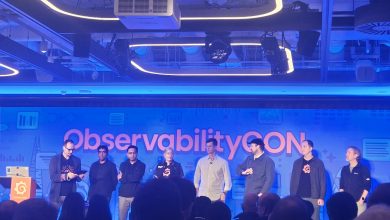
Since ChatGPT burst onto the scene just before the New Year, it seems as though we have not been able to escape generative AI dominating the news cycle – positively, with how it can aid the economy and maximize our time – to more negatively with how trustworthy or ethical the technology is and how it is going to irrevocably change the future of work.
Regardless of the many ‘hot takes’ on the trending technology, it seems as though generative AI is here to stay. A new survey found that 6 out of 10 workers use or plan to use generative AI at work. Additionally, according to Gartner, the technology is estimated to account for 10% of all data produced by 2025, up from less than 1% today.
If generative AI is truly going to be as prevalent as predicted, two key questions must be prioritized: How is the data that generative AI produces verified, and how can it be done at scale?
Enter an unsuspecting answer: Graph Technology
The most commonly used generative AI architecture is built on large language models (LLMs) that review large volumes of data and are trained to recognize, summarize, predict, and generate text. In essence, LLMs produce text that sounds right but lacks the ability to guarantee that it is right.
Graphs have the power to provide the ‘missing link’ between the questions asked of generative AI and the reasoning behind the answers it produces. Graph technology is purposefully constructed to uncover the rich yet sometimes hidden relationships between data sets through the use of graph algorithms, resulting in quick and accurate predictions. They do this through the use of knowledge graphs, which organize data from multiple sources into visible connections through the use of graph databases.
In this article, I will cover three main ways graphs improve the accuracy and reliability of generative AI output, ensuring deeper context and reasoning as we undoubtedly move into the era of AI-produced content.
Removing data silos
Already, generative AI is being used by the general public (i.e. ChatGPT) and is being implemented within private enterprises such as Salesforce, Microsoft, Google, and more to automate workflows, produce content, boost productivity, and provide a variety of other benefits.
For enterprises, data is one of their most valuable resources, and in the digital era, data is also where all records are held. But with the increase in workflows being moved to the cloud, hybrid work and disparate data stored in an increasing number of applications and systems, this means that silos of data are being created from an increasingly complex network of sources. This also creates a challenge for enterprises looking to synthesize their data into one single source of truth, a difficulty that generative AI will also struggle with.
Traditionally, generative AI consists of relational databases and neural networks that, if given enough data, produce natural language outputs. The shortcoming of the technology is that it has no means to organize, understand or analyse the relationships and connections between data from various sources.
Graph technology offers a solution by providing a unified framework that connects data sources, allowing AI systems to understand the relationships and associations between organizational entities and data sets. With a graph database, enterprises can utilize the predictive qualities of AI across their entire value chain, unlocking contextual awareness and enabling AI systems to provide more insightful and relevant responses based on interconnected data points.
A real world application of graph technology being used to remove data silos comes from NASA’s recent mission to Mars. NASA used a graph model to showcase data from a diverse group of subsystems handled by team members from various locations to understand how to prevent fatal disasters and transform data into actionable insights.
Graph technology could do the same thing for generative AI by connecting data subsystems and churning out actionable language outcomes.
Grounding and validating outcomes
Generative AI is just like us at our worst – when it doesn’t know an answer, it will make something up that sounds like it could be the right answer. AI researchers have called these “AI hallucinations.” The dangerous aspect of this phenomenon is that generative AI lacks the insight to understand the answer it is making up is untrustworthy, or factually inaccurate or hyperbolized.
Knowledge graphs can allow enterprises to ground and validate the responses received from large language models. Grounding is enterprises’ ability to validate responses from large language models against their knowledge graphs, empowering them to maintain a strong foundation of accuracy and trust when leveraging AI systems. Grounding also uncovers the deterministic facts in data sets, ensuring that generative responses are based on factual truth determined through explicit relationships.
Enterprises using knowledge graphs can visually track where the connections between data are and why an answer is accurate, as opposed to an answer appearing out of thin air with no ability to trace the reasoning behind the answer.
If enterprises can instead train a large language model on the high-quality, structured data in a knowledge graph, the risk of errors and ‘hallucinations’ will be significantly reduced.
Connecting the dots and finding hidden relationships
While booming in popularity, we are still at the most basic stage of generative AI, with large language models having the ability to create and predict answers but lacking the ability to make deeper connections or uncover the complex relationships hidden within data sets.
To reach the next level of understanding, enterprises should look to graph technology to represent language as interconnected nodes, capturing the semantic relationships between words and phrases. Because knowledge graphs enable generative AI to produce language based on the relationships and accurate meaning of the data it receives, the insights that generative AI produces are more trustworthy.
This approach enhances language understanding and enables AI systems to deliver accurate and coherent responses, effectively engaging with users in natural conversations.
Conclusion
Enterprises have many options for tackling the burgeoning generative AI era and using the technology for productivity and positive business outcomes. For those facing the challenges and opportunities it presents head-on, graph technology can be a natural partner for large language models by providing the ability to remove organizational data silos, validate the answers and find relationships in a way that traditional large language models do not.



